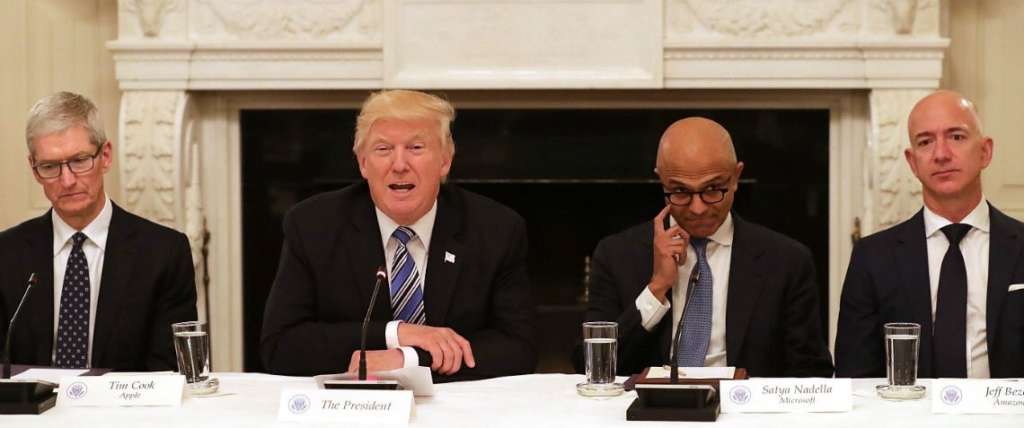IT modernization opera: Same score, new conductor
The federal government may be a step behind industry when it comes to IT, but it's always the same step. It stays in the race, never quite catching up.
One again, a White House summit of the nation’s greatest business minds, there to help fix the government.
Behind a skirted table sit Apple boss Tim Cook, Microsoft CEO Satya Nadella and Amazon CEO Jeff Bezos. They flank President Donald Trump. He’s beaming. They’re looking as if their minds are elsewhere.
These famous executives, and a couple of dozen others, attended the White House summit to discuss modernizing the federal government. Led by presidential advisor Jared Kushner, the event’s themes had a familiar ring. Pretty much the same group traipsed regularly to the Obama White House to talk about digital services and updating the government’s old and byzantine IT infrastructure.
Somewhere, former Federal Chief Information Officer Tony Scott smiles, thinking, “Good luck, fellas.”

The government may be a step behind industry when it comes to information technology and digital services, but it’s perpetually the same step behind. It stays in the race, never quite catching up. Every CIO gathers to talk about cloud and modernization fixes on the COBOL problem. Yet COBOL also remains deeply embedded in the airline, banking, insurance and health care industries.
The official description of the day’s breakout sessions notes, “Topics ranged from building out cloud infrastructure, retiring out-of-date legacy systems, increasing the use of shared services, reforming the procurement process, and many more technical policy areas.” To these familiar areas, Bezos suggested adding artificial intelligence.
Relative to eight years ago, the government exhibits more agile development and cloud computing. Not a lot, but more. Cybersecurity is somewhat improved following the cyber sprint. The Federal Information Technology Acquisition Reform Act still has promise, even if few departments have changed their procedures all that much.
Trump’s team is aware of the big challenges still ahead.
For instance:
- Veterans Affairs Secretary David Shulkin has boldly decided to scrap VistA in favor of the commercial electronic health record the Defense Department has started using. Rashly might be a better word. I believe this move has more than a 54.7 percent chance of disaster, but it acknowledges an important need. Service members should have the same medical record when they convert to veterans.
- The 2018 budget proposes privatizing the air traffic control function at FAA. This is an admittedly controversial way of accomplishing ATC modernization. The project has been inching along in one form or another for decades.
- An Obama-era creation, the U.S Digital Service, survives and (presumably) thrives in the Trump administration. It does fast-deliverable software projects for federal agencies (it still has the Obama-era webpage. You can spot Mikey Dickerson there in the head cloud photo).
Whatever else from the previous administration Trump may be undoing, IT modernization and improvement of service to citizens remains a non-political effort, a basic piece of good government. It dates back several administrations. Like an opera score, it becomes subject to re-interpretation with new players and modern instruments. But the themes endure.
Copyright © 2025 Federal News Network. All rights reserved. This website is not intended for users located within the European Economic Area.
Tom Temin is host of the Federal Drive and has been providing insight on federal technology and management issues for more than 30 years.
Follow @tteminWFED






